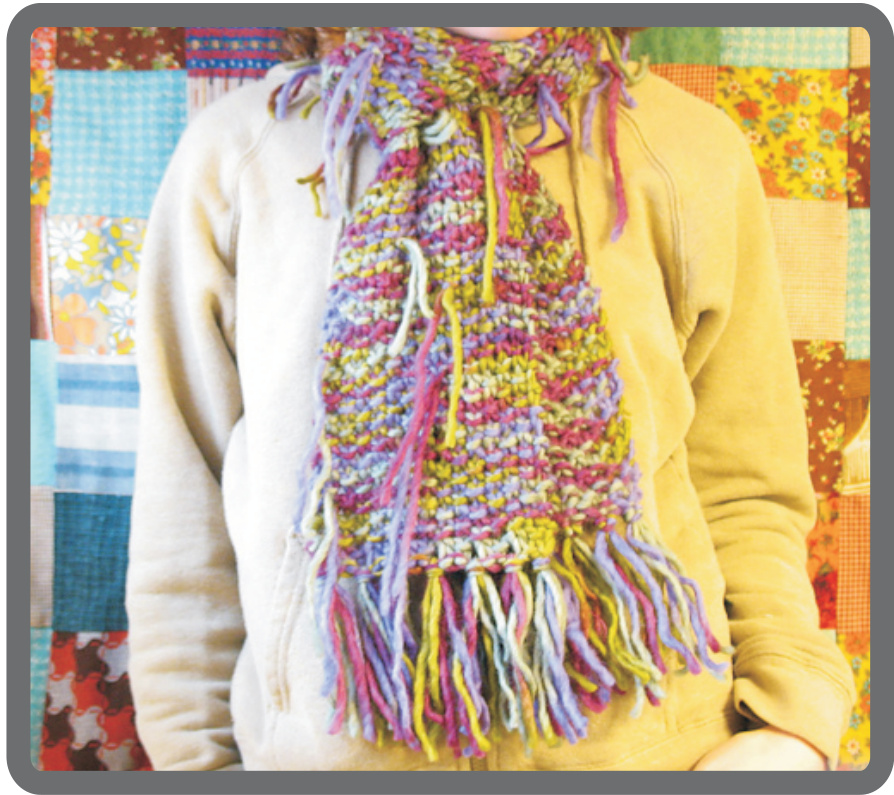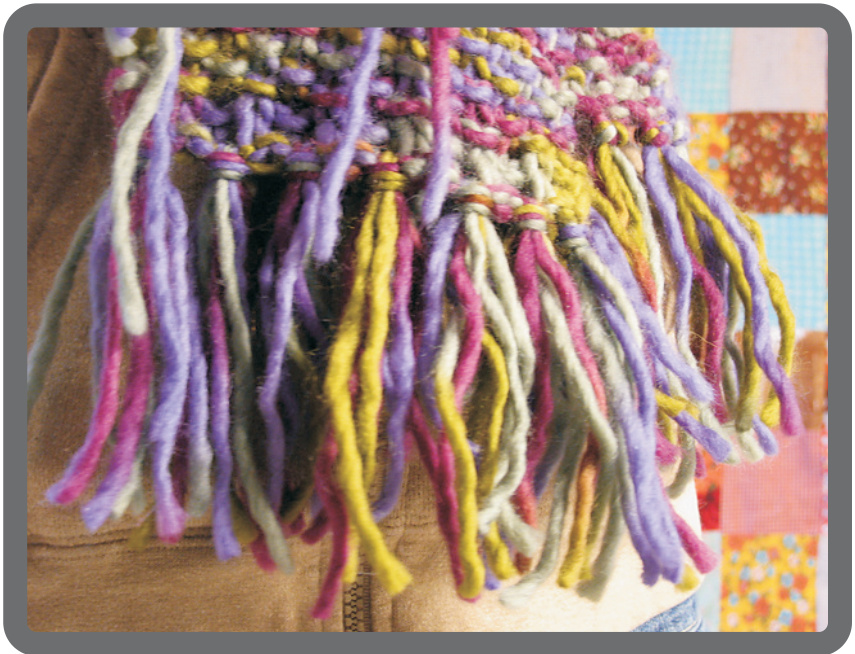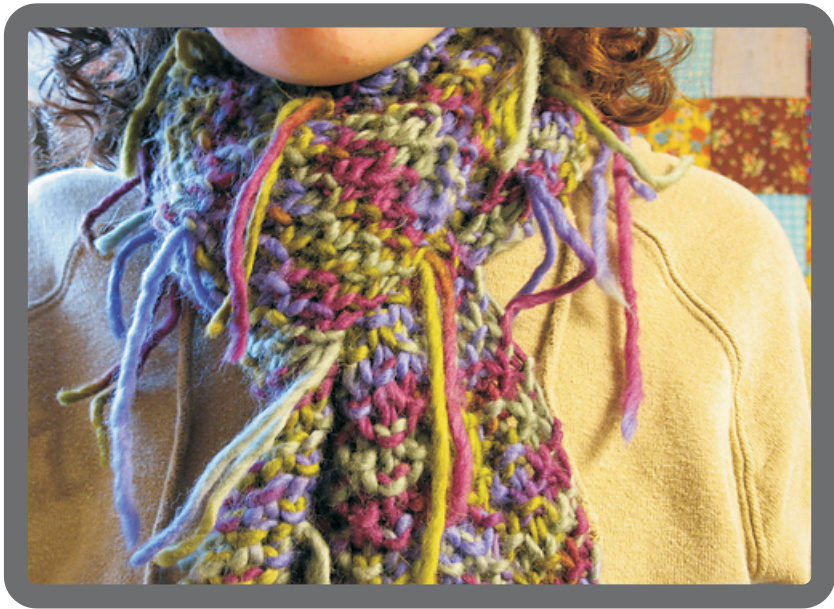by Kelly McClure Seaflower Scarf
Abbreviations
approx beg bet BOCC ch cn co cont dc dpn(s) dec(s) foll hdc hk inc incl K K1 f&b ktb1 kwise K2tog lp(s) M1 M1L M1R MC Ppatt pm psso pu pwise rem rep rnd(s) RS sc sk sl m sp(s) ssk st(s) st st tbl tog ws approximately beginning between bind off contrasting colour chain cable needle cast on continue double crochet double point needle(s) decrease(s) follow(ing) half double crochet hook increase including knit knit 1 st in front and back knit through back loop knitwise knit two together loop(s) make one make one left make one right main colour purl pattern place marker passover pick up purlwise remaining repeat round(s) right side single crochet skip slip marker space(s) slip, slip, k2 slipped sts tog stitch(es) stockinette stitch through back loop together wrong side yarn over This scarf is an easy classic with a little flavour. The pattern includes some good tips on scarf building, making this a superb first scarf, especially to practice your knits and purls.

Craft: knitting
Skill Level: Rookie-Apprentice-Virtuoso-Genius Skills: knit, purl Sizes: one size Finished Measurements: approx. 6" wide and $75"$ long lying flat Gauge: not important $\langle22\ s t\mathbf{s}=4"$ as given on ball band) Yarn: 200g, 216 yds $(200\;\mathsf{m})$ super bulky weight yarn Suggested Brand: 4 balls of Twilleys of Stamford Freedom wool shown in 408“Moorland" Needles/Hooks: 8 mm straight needles; medium crochet hook (to attach tassels) Other Materials: tapestry needle or teeny crochet hook
Instructions:
Using a hardcover book that is as wide as you would like your tassels to be long, wrap yarn around approx. 55 times. Set aside. The advantage of making your tassels ahead of time is that you can now knit your scarf until you run right out of yarn and won't have to guess when to finish. CO 15 sts (or an odd number).
Row 1: K1, P1
Repeat this row until scarf reaches desired length or until you run out of yarn. (Knits and purls should work out to fall opposite of each other, so that knits are sitting on top of purls and vice versa).

BO and weave in ends.

Pick up your book and cut the wraps at one side only. The advantage of using a hardcover book is that you can slide your scissors under the yarn at the edge where the pages are, but be careful not to wreck your book. You should have 55 strands that are twice as long as the width of your book. Using three strands at a time, use your crochet hook to pull through and secure tassels at each end of your scarf: Insert your hook at one corner; hook three strands and pull through, pulling up a loop; turn hook and pick up the six loose ends of the strands; pull through and pull tight. Make seven tassels along each end. With the yarn that is leftover from your tassels (you should only need 42 strands for that), cut remaining strands at various lengths and using your crochet hook, attach randomly to your scarf on one side only (using the same method you did for the tassels). When Kelly isn't busy knitting and designing, she is exploring the Rocky Mountains with her dog, or probably drinking tea.









